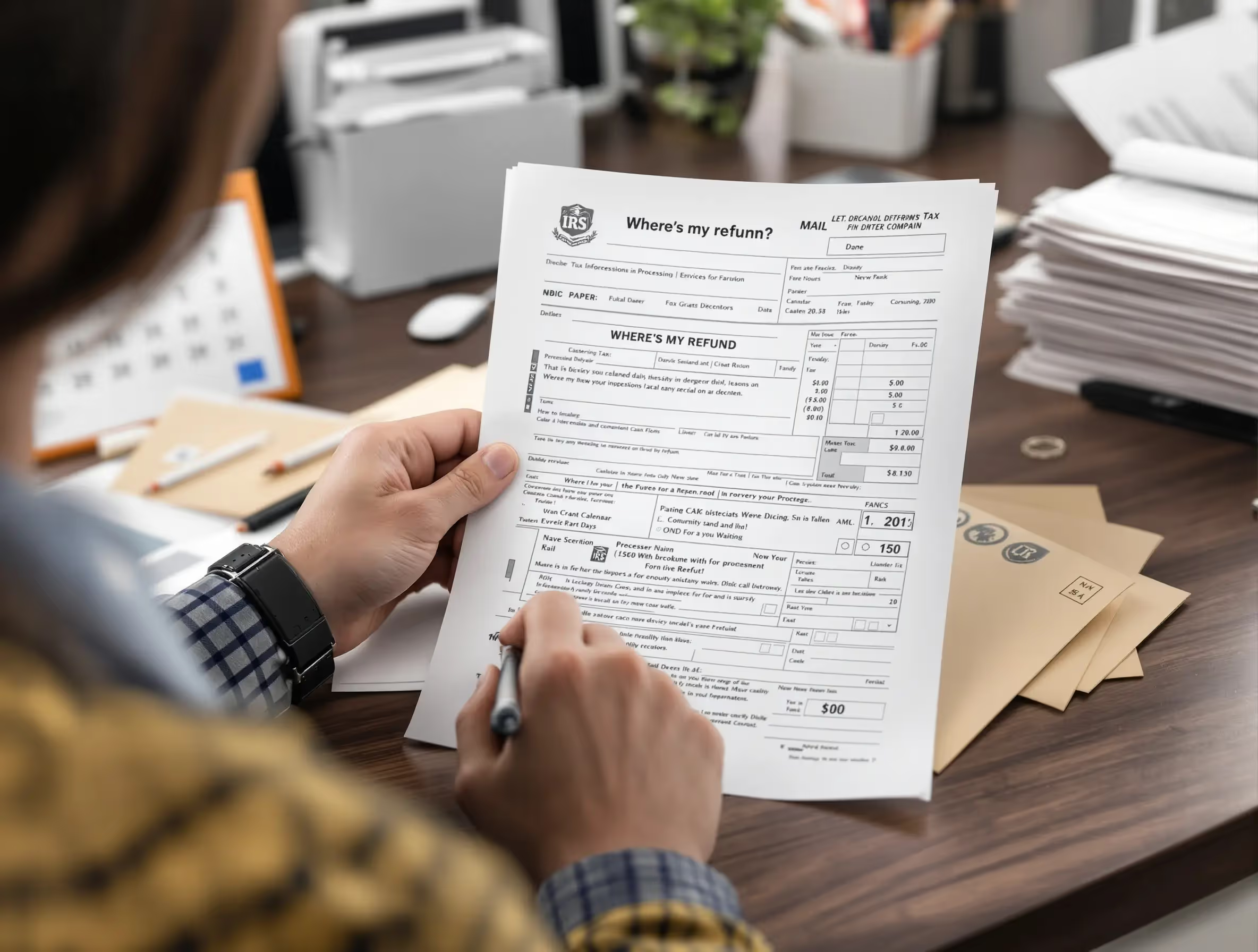
The IRS continues to experience severe delays in processing paper returns and amended returns, despite a government-wide effort to modernize tax operations and digitize tax operations. According to the National Taxpayer Advocate’s 2024 Annual Report to Congress and the Government Accountability Office (GAO), millions of returns remain in manual review queues, forcing taxpayers to wait months for refunds or updates on their claims.
The IRS still relies heavily on manual labor to process paper returns. Each filing undergoes several steps—mail sorting, data entry, verification, and manual review—before a refund can be approved. The agency processed approximately 76 million paper-filed forms and 125 million pieces of correspondence in 2024, underscoring the ongoing magnitude of the issue.
A 2024 GAO report found that IRS centers in Austin and Kansas City had more than 4.6 million unprocessed paper returns as of April 2023. Officials described the procedure as “labor-intensive” and “inefficient,” citing outdated systems and limited automation as primary obstacles. While most e-filed Form 1040 returns are processed within 21 days, paper returns can take months before refunds are paid or status updates are available.
The IRS acknowledged these challenges, noting that staffing shortages and limited technology continue to affect refund timelines. “Our goal is to expand electronic processing and reduce manual steps while maintaining accuracy,” an IRS spokesperson said. “We’re developing new scanning systems to accelerate reviews and ensure each return is processed correctly.”
Amended returns, filed on Form 1040-X, face even greater delays. Regardless of whether taxpayers e-file or mail their amended return, the document must still be reviewed manually. The Taxpayer Advocate Service reported that the IRS continues to rely on the Integrated Data Retrieval System, a decades-old platform that requires multiple manual inputs for each adjustment.
As of October 2024, the IRS had 2.3 million unprocessed amended returns in its inventory. Roughly 72% had exceeded the standard eight-to-twelve-week window, while nearly 68% of international filings had been pending for more than 120 days. “Even electronically submitted amended returns must go through human review,” said Erin Collins, the National Taxpayer Advocate.
The agency has begun pilot programs to automate scanning and routing for some amended returns. However, full deployment across all IRS offices could take years, given infrastructure gaps and competing modernization priorities.
The IRS’s Paperless Processing Initiative, announced in 2023, aims to eliminate paper workflows for most forms by 2025. The initiative includes digitizing Form 1040 submissions and integrating electronic document verification systems. While progress has been made, implementation delays have slowed results.
Congress and federal watchdogs have urged the agency to accelerate its automation efforts. In its 2024 oversight report, the GAO noted that “continued reliance on paper records limits efficiency and increases the risk of processing errors.” IRS officials indicate that newer scanning technology and digital correspondence systems will be implemented by 2026, enhancing both speed and accuracy.
Federal agencies continue to monitor IRS progress. The Treasury Inspector General for Tax Administration (TIGTA) has recommended that the IRS establish stricter benchmarks for automation and allocate sufficient staff to meet modernization goals. IRS leaders say the next stage of development will include wider access to digital verification tools and more consistent refund tracking for paper filers.
Once fully implemented, the new systems will enable most paper returns to be scanned and digitally reviewed, thereby significantly reducing the manual workload. The IRS expects this change to minimize refund timelines and provide more accurate refund status updates to taxpayers.
Taxpayers can check the status of their Form 1040-X using the Where’s My Amended Return? Tool on IRS.gov. The tool provides updates for the current year and up to three prior years, showing whether a return has been received, adjusted, or completed.
Alternatively, taxpayers can call the IRS toll-free hotline at 866-464-2050 for assistance in English or Spanish. The agency advises waiting three weeks after filing before checking status, giving staff time to enter the amended return into the system.
Processing may take longer if an amended return is incomplete, unsigned, or includes special forms requiring extra review. Cases involving identity verification, bankruptcy, or allocation to an injured spouse can also face delays. When additional information is needed, the IRS contacts taxpayers by mail with specific instructions.
Taxpayers are urged to file electronically, verify all information before submission, and retain copies of their returns. Mailing errors and missing documents continue to be common causes of extended processing times.
E-filed returns are typically processed within about three weeks, while paper and amended filings often take eight to twelve weeks, and in some cases up to sixteen. Refunds are either directly deposited or mailed as paper checks, depending on the taxpayer's chosen method.
The IRS advises against submitting duplicate returns or calling before sixteen weeks, as early inquiries can slow processing. Taxpayers who filed joint returns or those who require corrections should expect longer wait times due to additional verification procedures.
IRS officials emphasize that modernization remains a top priority for the agency. “We’re focused on reducing paper handling and improving digital efficiency,” an IRS spokesperson said. “Our future systems will ensure faster, more accurate refunds for taxpayers.”
Taxpayer advocates agree that progress is visible but caution that backlogs remain a concern. Collins added, “Taxpayers deserve consistent timelines and transparency from the agency handling their returns and refunds.”
For updates, taxpayers can visit IRS.gov or consult the latest GAO report on federal tax administration performance.